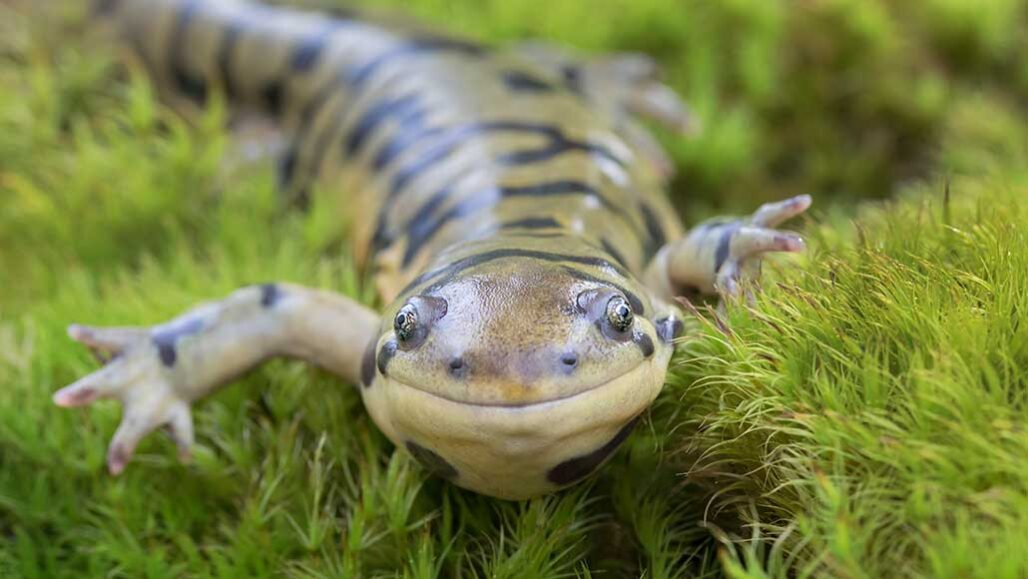amphibians: A group of animals that includes frogs, salamanders and caecilians. Amphibians have backbones and can breathe through their skin. Unlike reptiles, birds and mammals, unborn or unhatched amphibians do not develop in a special protective sac called an amniotic sac.
breed: (verb) To produce offspring through reproduction.
caecilian: A type of amphibian that has no legs. Caecilians have ring-shaped folds of skin called annuli, small eyes covered by skin and sometimes bone, and a pair of tentacles. Most of them live underground in the soil, but some spend their entire lives in water.
develop: To emerge or to make come into being, either naturally or through human intervention, such as by manufacturing. (in biology) To grow as an organism from conception through adulthood, often undergoing changes in chemistry, size, mental maturity, size or sometimes even shape. (as with towns) The conversion of wildland to host communities of people. This development can include the building of roads, homes, stores, schools and more. Usually, trees and grasslands are cut down and replaced with structures or landscaped yards and parks.
ectotherm: This is an animal that relies on external sources to control its body temperature. Their body temperatures change with that of their environment.
egg: The unfertilized reproductive cell made by females.
environment: The sum of all of the things that exist around some organism or the process and the condition those things create. Environment may refer to the weather and ecosystem in which some animal lives, or, perhaps, the temperature and humidity (or even the placement of things in the vicinity of an item of interest).
fetus: (Adj. fetal ) The term for a mammal or other large animal during its later-stages of development in the womb. For humans, this term is usually applied after the eighth week of development.
gills: The respiratory organ of most aquatic animals that filters oxygen out of water. Fish and other water-dwelling animals use gills to breathe.
infection: A disease that can spread from one organism to another. It’s usually caused by some type of germ.
larvae: Immature insects that have a distinctly different form (body shape) than when they are adults. For instance, caterpillars are larval butterflies and maggots are larval flies. (Sometimes this term also is used to describe such a stage in the development of fish, frogs and other animals.)
limb: (in physiology) An arm or leg. (in botany) A large structural part of a tree that branches out from the trunk.
mammal: A warm-blooded animal distinguished by the possession of hair or fur, the secretion of milk by females for feeding their young, and (typically) the bearing of live young.
metamorphosis: A dramatic change from one stage in an animal’s life history to the next, such as the process by which a tadpole becomes a frog or the changes that transform a caterpillar into a butterfly.
oxygen: A gas that makes up about 21 percent of Earth's atmosphere. All animals and many microorganisms need oxygen to fuel their growth (and metabolism).
reptile: Cold-blooded vertebrate animals, whose skin is covered with scales or horny plates. Snakes, turtles, lizards and alligators are all reptiles.
species: A group of similar organisms capable of producing offspring that can survive and reproduce.
tetrapod: A four-limbed animal, including amphibians, reptiles, birds and mammals.
vertebrate: The group of animals with a brain, two eyes, and a stiff nerve cord or backbone running down the back. This group includes amphibians, reptiles, birds, mammals and most fish.








